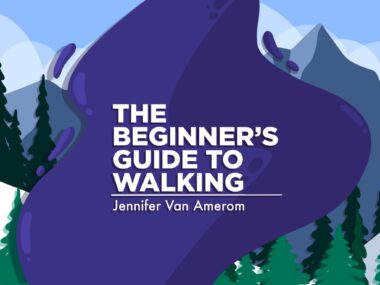How the Ontario wildfires threaten my health, given my NMOSD
For me, air pollution can exacerbate symptoms or even trigger a flare-up
Written by |

As wildfires rage across Ontario, Canada, and neighboring provinces, the skies over Toronto have turned hazy and the air has become a silent threat. For most, this means itchy eyes and a scratchy throat. But for those of us living with neuromyelitis optica spectrum disorder (NMOSD), the consequences run deeper, into the very nerves that help us see and function.
This summer, Toronto has been ranked among the most polluted cities in the world, with air quality indices reaching “very high risk” levels. The culprit? Smoke drifting from wildfires burning across western Ontario, Manitoba, and the Prairies. Environment Canada has issued repeated special air quality statements, warning residents to limit outdoor activity and keep windows closed.
While I’m already staying indoors a lot this summer because of the high temperatures and my body’s inability to regulate itself fast enough, the smoky haze is just another way Mother Nature is canceling summer for me this year.
What isn’t always discussed is how these fires release fine particulate matter, also known as PM2.5, which consists of microscopic particles that penetrate deep into the lungs and bloodstream. For the general population, that can trigger respiratory symptoms. But for those with NMOSD, the stakes are even higher.
NMOSD and the inflammatory cascade
NMOSD is a rare autoimmune disease that primarily affects the optic nerves and spinal cord, often leading to optic neuritis, a painful inflammation that can cause temporary or even permanent vision loss. I had bout after bout of optic neuritis last year, so I’m now being extremely vigilant. Unfortunately, NMOSD is driven by immune system dysfunction, and exposure to environmental triggers, like air pollution, can exacerbate symptoms.
The minute my eyes started to get itchy and even a little blurry, I did some research and spoke to my optometrist. What I discovered is that wildfire smoke contains toxic compounds and inflammatory particles that can provoke systemic inflammation. For someone like me with NMOSD, this means:
- Increased risk of optic neuritis flare-ups due to heightened immune activity
- Eye irritation that compounds existing visual sensitivity
- Fatigue and neurological symptoms worsened by poor oxygenation and systemic stress
Even short-term exposure can be dangerous. The surface of my eyes is already vulnerable from past optic neuritis attacks, but now, spending even a few minutes outside to water my garden causes my eyes to become inflamed, bloodshot, dry, and hypersensitive. My biggest worry with all this smoke and heat is that because NMOSD can affect my brain stem and autonomic functions, my body’s ability to regulate inflammation may be compromised, landing me right back in the emergency room.
These past few weeks have felt like walking a tightrope between protecting my health and preserving some sense of normalcy. I’ve canceled hikes with friends, postponed camping trips, and even skipped some of my short after-dinner walks around the neighborhood. The smoke settles heavily on the city some evenings, casting an amber tint over the skyline and making the air feel thick, almost soupy. I can taste the particles before I even smell them.
Inside the house, our air purifiers run nonstop on every floor. They’ve become the background soundtrack of my day, their gentle hum now familiar enough to lull me into midday naps when fatigue sets in. I check the filters obsessively, knowing those little machines are my first line of defense against airborne triggers that could spark a flare-up.
Whenever I’m driving, I make sure to hit the “recirculate air” button to keep outdoor air from seeping into the car. Once the cabin is cooled, I can at least breathe a bit easier, knowing we’re recycling cleaner air. And if I have no choice but to be outside for extended periods, like for grocery runs, doctor visits, or the rare walk for exercise, I wear an N95 mask. It’s not comfortable, especially in heat and humidity, but it’s a necessary buffer against PM2.5, which could tip my system into full-blown inflammation.
I’ve had to become hyperaware of my surroundings, checking the air quality index before stepping out, watching for signs of eye discomfort, and constantly adjusting my plans to reduce exposure. Every little choice feels strategic, part of a quiet battle to stay well.
Note: Neuromyelitis News is strictly a news and information website about the disease. It does not provide medical advice, diagnosis, or treatment. This content is not intended to be a substitute for professional medical advice, diagnosis, or treatment. Always seek the advice of your physician or other qualified health providers with any questions you may have regarding a medical condition. Never disregard professional medical advice or delay in seeking it because of something you have read on this website. The opinions expressed in this column are not those of Neuromyelitis News or its parent company, Bionews, and are intended to spark discussion about issues pertaining to neuromyelitis optica spectrum disorder.





Leave a comment
Fill in the required fields to post. Your email address will not be published.